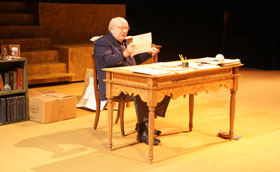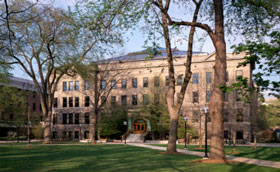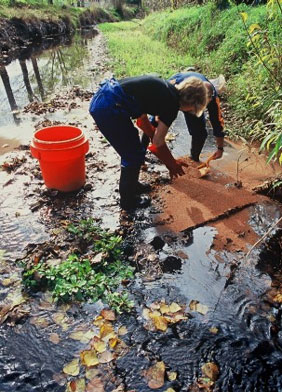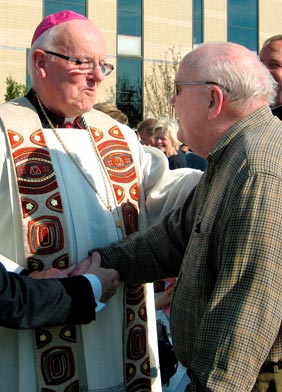 As the only child of Peter Martin and Sophia Dubridge Wege, Peter M. Wege began honoring their memory half a century ago. Because of his mother’s strong Catholic faith, her son often used his gifts to church causes as an opportunity to memorialize his parents. His first major gift in 1959 went to help build Alburtus Magnus Hall of Science for Aquinas College.
As the only child of Peter Martin and Sophia Dubridge Wege, Peter M. Wege began honoring their memory half a century ago. Because of his mother’s strong Catholic faith, her son often used his gifts to church causes as an opportunity to memorialize his parents. His first major gift in 1959 went to help build Alburtus Magnus Hall of Science for Aquinas College.
At the ceremonies opening the new science hall on October 22, 1960, Wege dedicated the building to his parents. A memorial plaque at the entrance to the science building commemorates both Peter Martin, who died in 1947, and Sophia Dubridge Wege, who died August 17, 1959. Almost fifty years later, on September 23, 2008, Peter again paid tribute to his parents and, again, it was through the Catholic Church. This most recent gift was an act of spontaneous generosity and for the most personal of reasons. Seated outdoors in the new Cathedral Square during the dedication of the Catholic Diocese headquarters at 360 S. Division, Peter went back in time as he gazed across the Square. He was looking at a renovated office building on the northwest corner of Division and Wealthy.
In 1911, his father moved into the upstairs apartment in that building when he came to Grand Rapids from Ohio to start Metal Office Furniture. After he married Grand Rapids native Sophia Dubridge, it was their first home. It became the first home of their only child Peter M. Wege when he was born in Februrary 1920.
Now that original Wege home overlooks the newly dedicated Cathedral Square, anchored by the $22 million, 100,000 square-foot Cathedral Square Center building. The new Center is, of course, LEED certified as all Peter Wege’s capital donations must be.
The Most Reverend Walter A. Hurley, Bishop of Grand Rapids was as stunned as the 600 people in the audience were at Peter’s additional, surprise gift. When he had time to reflect on what Peter Martin and Sophia Wege’s son had done for the church, Bishop Hurley wrote:
I am grateful to Peter Wege for his extraordinary gift to the diocesan Cathedral Square project. This recent gift reflects a tradition of support for the Diocese of Grand Rapids, its parishes, schools, and institutions as well as many local, national, and international programs and organizations. Time and again, through his unwavering generosity, Mr. Wege has demonstrated his commitment to and passion for the church, the community, education, healthcare, and the environment.

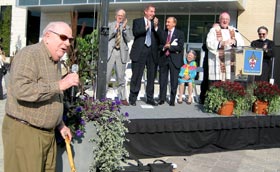
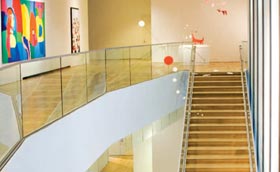
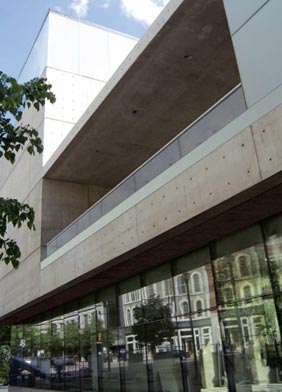 After one year in operation as the world’s first art museum to win a Gold LEED medal from the United States Green Building Council, the Grand Rapids Art Museum has doubled its attendance. The new GRAM welcomed twice as many people to its galleries in one year as the number of those who visited GRAM in its last year in the former federal building.
After one year in operation as the world’s first art museum to win a Gold LEED medal from the United States Green Building Council, the Grand Rapids Art Museum has doubled its attendance. The new GRAM welcomed twice as many people to its galleries in one year as the number of those who visited GRAM in its last year in the former federal building.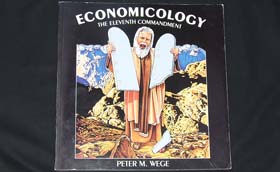
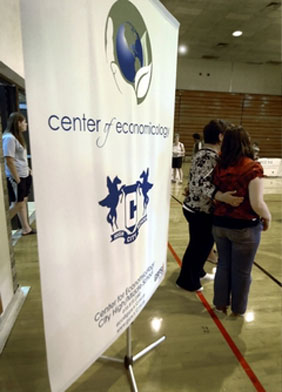 Thanks to The Wege Foundation, the Grand Rapids Public Schools are infusing Peter Wege’s concept of economicology into the curriculum. Wege coined the word economicology to define the balance needed between the economy and the ecology. The word summarizes Wege’s advocacy for educating the public on the reality that a prosperous economy depends on maintaining a healthy environment.
Thanks to The Wege Foundation, the Grand Rapids Public Schools are infusing Peter Wege’s concept of economicology into the curriculum. Wege coined the word economicology to define the balance needed between the economy and the ecology. The word summarizes Wege’s advocacy for educating the public on the reality that a prosperous economy depends on maintaining a healthy environment.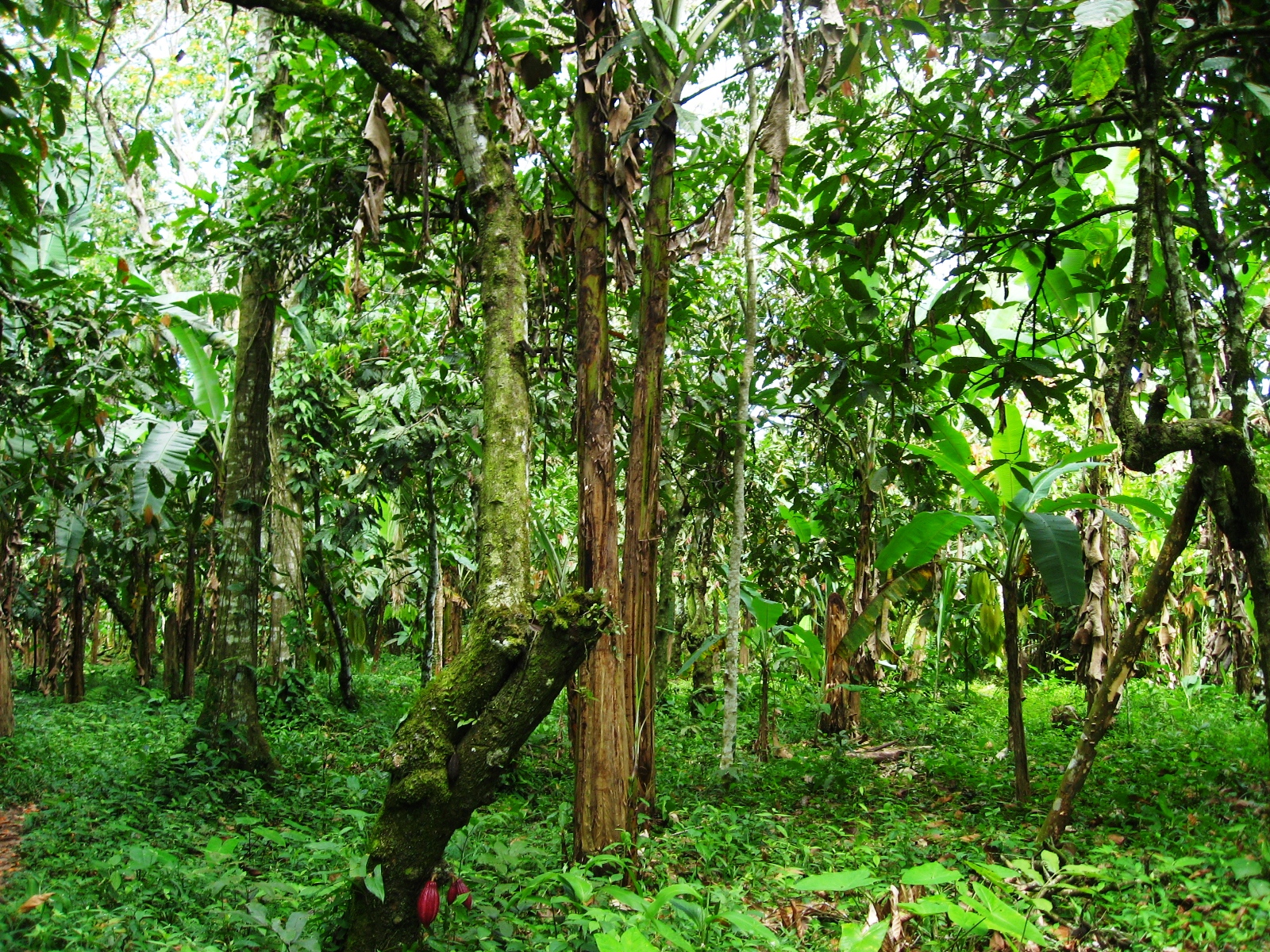
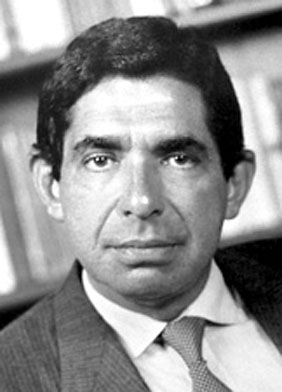 The forward-thinking president of Costa Rica Oscar Arias Sanchez has launched an international conservation effort that could help save 4% of the world’s biodiversity. Called the Peace With Nature Initiative, President Arias’s plan continues the visionary environmentalism Costa Rica began two decades ago.
The forward-thinking president of Costa Rica Oscar Arias Sanchez has launched an international conservation effort that could help save 4% of the world’s biodiversity. Called the Peace With Nature Initiative, President Arias’s plan continues the visionary environmentalism Costa Rica began two decades ago.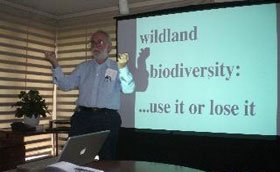
 In late July, 2008, The Wege Foundation invited friends from several West Michigan foundations to meet University of Pennsylvania professor Dr. Dan Janzen and his wife Dr. Winnie Hallwachs Janzen and learn about their conservation work in the Costa Rican rain forest. Since Peter Wege first met the Janzens in 1991, The Wege Foundation has supported their work buying private land to be permanently preserved. The two Dr. Janzens have worked closely with the Costa Rican government to help the Central American country become the global leader in conserved park land relative to its size.
In late July, 2008, The Wege Foundation invited friends from several West Michigan foundations to meet University of Pennsylvania professor Dr. Dan Janzen and his wife Dr. Winnie Hallwachs Janzen and learn about their conservation work in the Costa Rican rain forest. Since Peter Wege first met the Janzens in 1991, The Wege Foundation has supported their work buying private land to be permanently preserved. The two Dr. Janzens have worked closely with the Costa Rican government to help the Central American country become the global leader in conserved park land relative to its size.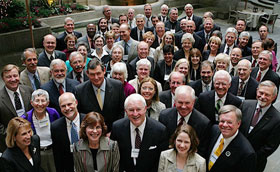
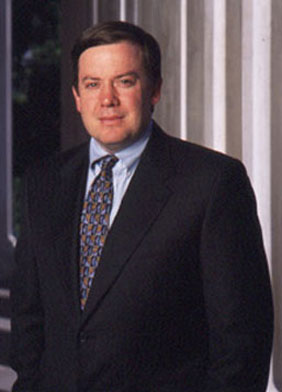 The 2008 Climate Leadership Summit of the American College & University Presidents’ Climate Commitment concluded its two days of meetings in Grand Rapids, Michigan, on June 6. Speaking at the closing luncheon, the chairman of the ACUPCC and president of Arizona State University, Michael M. Crowe did not tiptoe around the sensitive topic of membership.
The 2008 Climate Leadership Summit of the American College & University Presidents’ Climate Commitment concluded its two days of meetings in Grand Rapids, Michigan, on June 6. Speaking at the closing luncheon, the chairman of the ACUPCC and president of Arizona State University, Michael M. Crowe did not tiptoe around the sensitive topic of membership.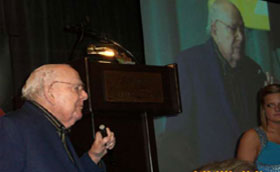
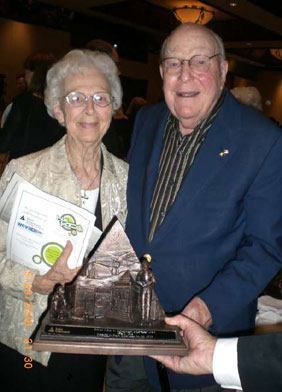 At a black-time banquet in the Amway Grand Hotel, Junior Achievement of West Michigan named Peter M. Wege the winner of the 2008 Edward J. Frey Distinguished Achievement Award. It was Edward J. Frey, a Grand Rapids banker and insurance entrepreneur, who founded the local chapter of Junior Achievement in 1955.
At a black-time banquet in the Amway Grand Hotel, Junior Achievement of West Michigan named Peter M. Wege the winner of the 2008 Edward J. Frey Distinguished Achievement Award. It was Edward J. Frey, a Grand Rapids banker and insurance entrepreneur, who founded the local chapter of Junior Achievement in 1955.